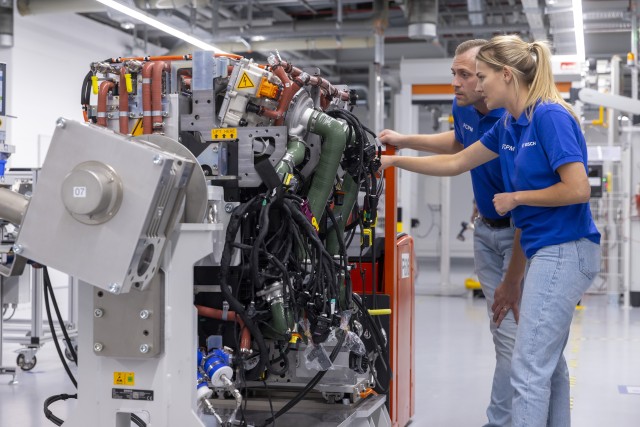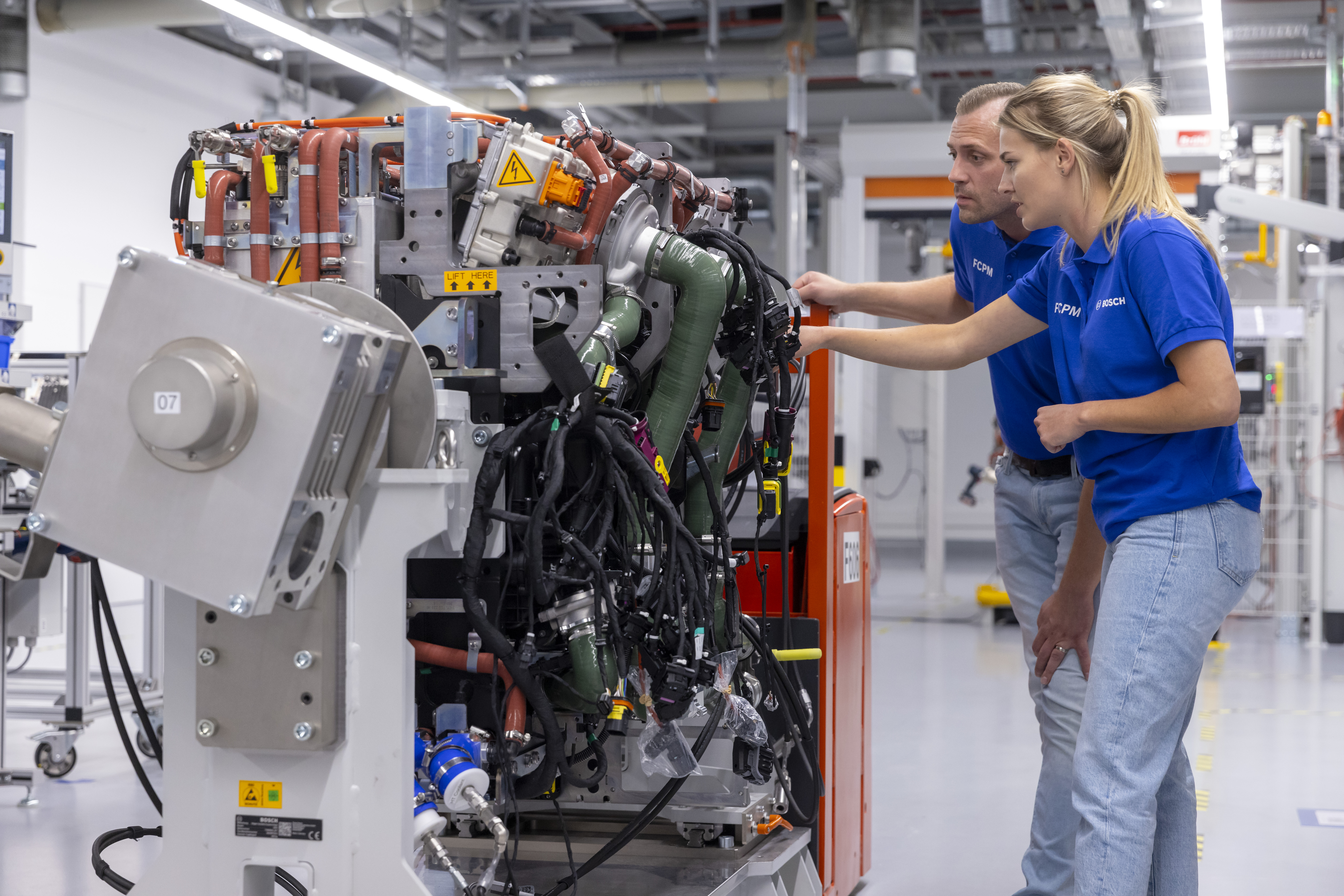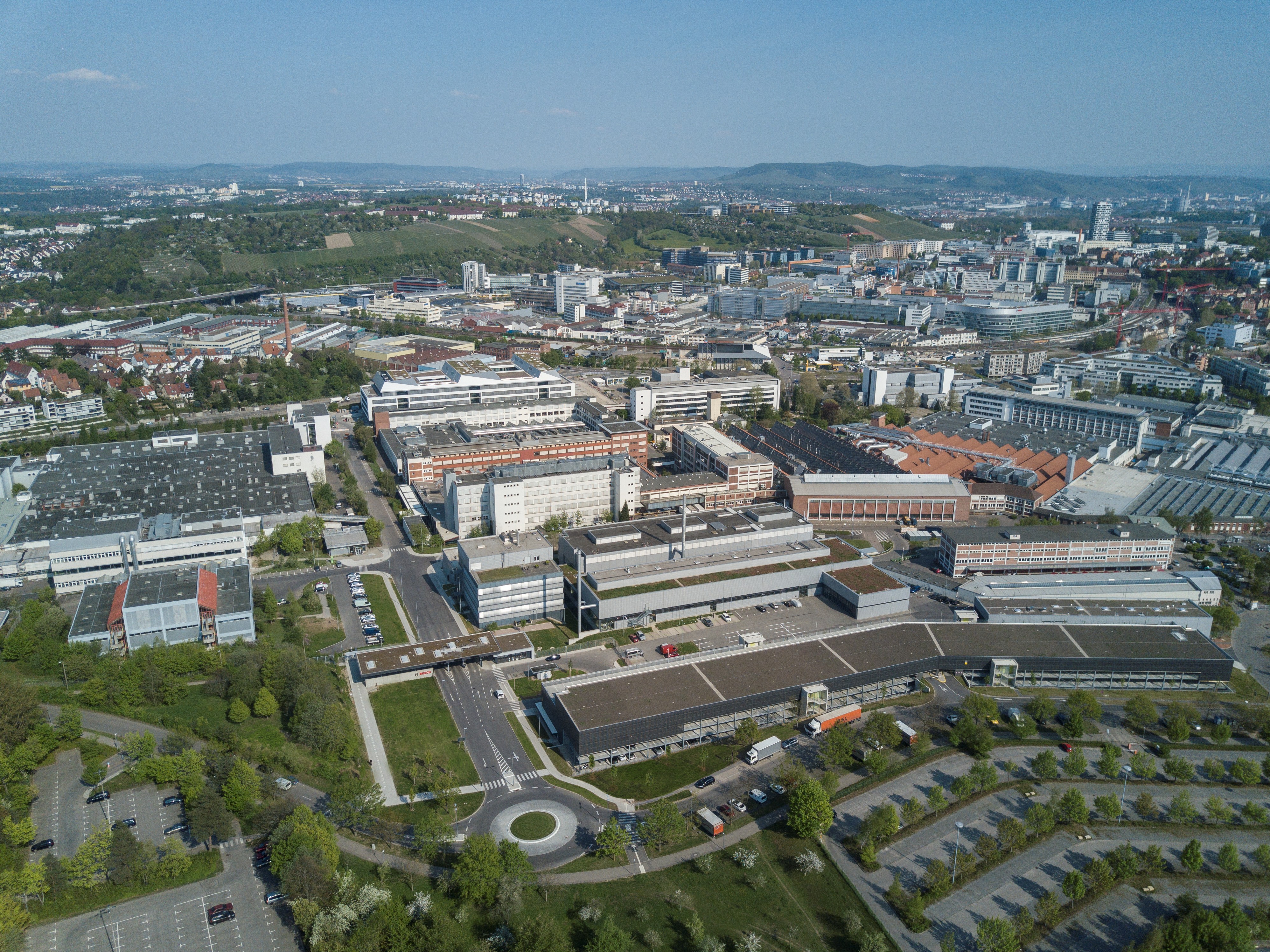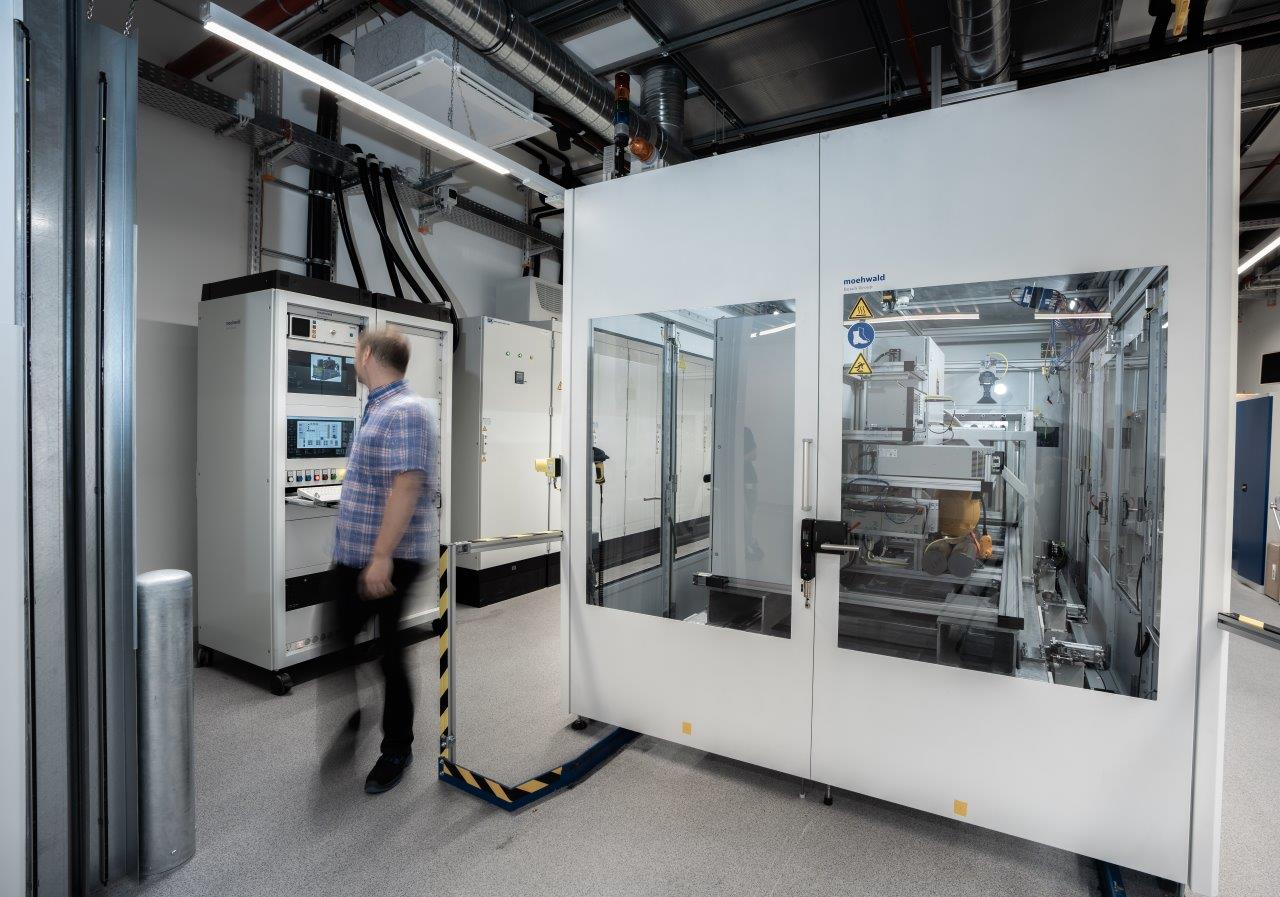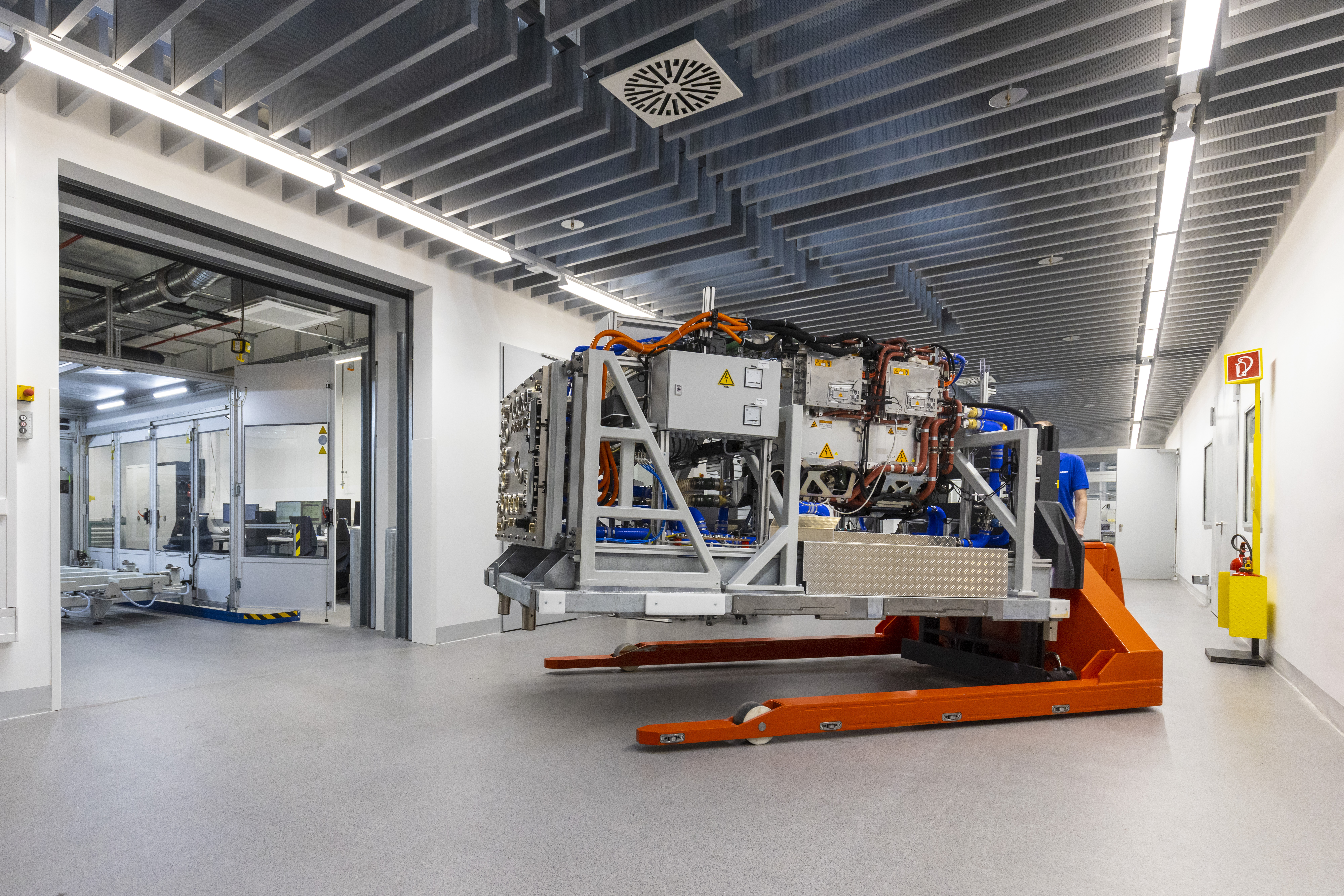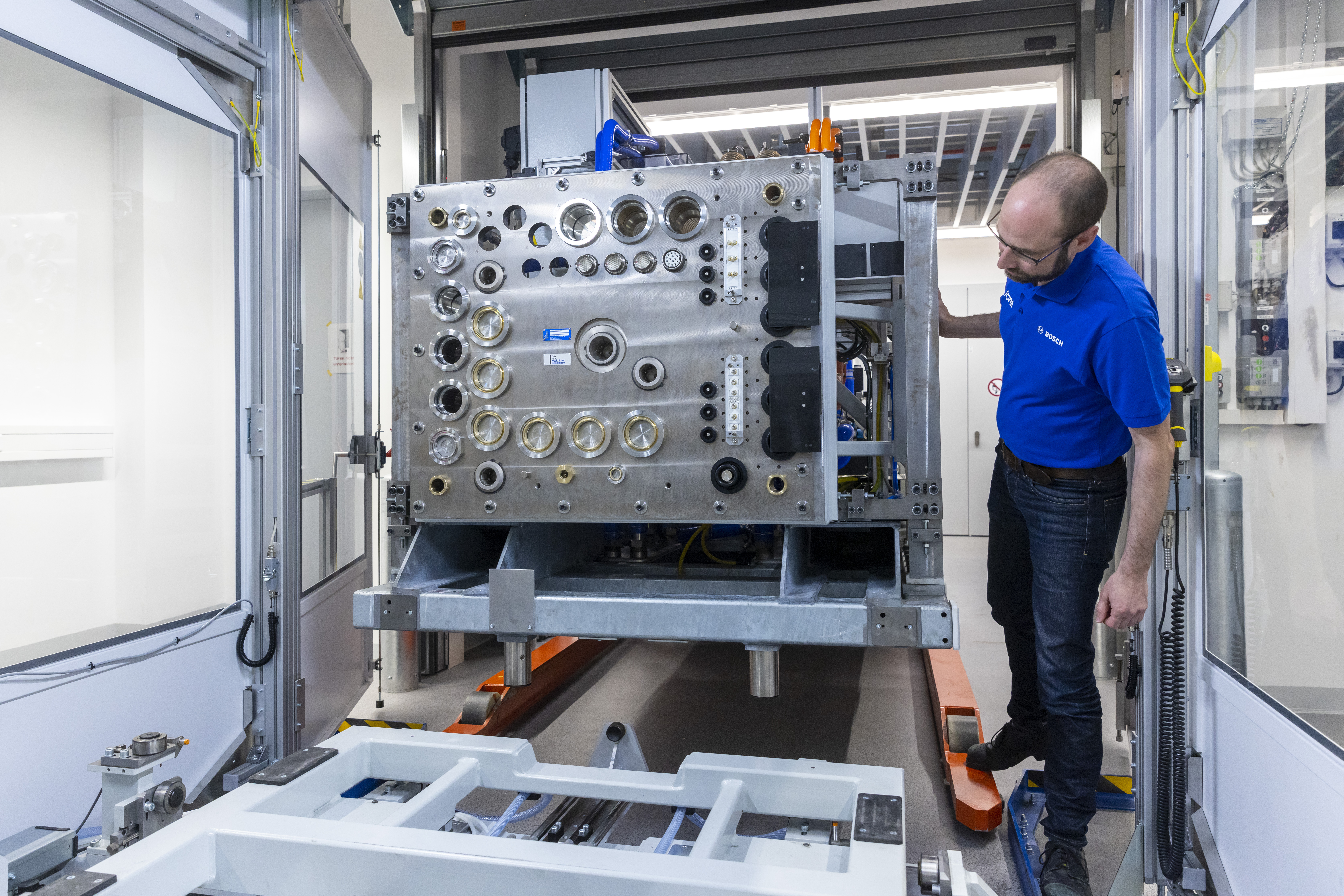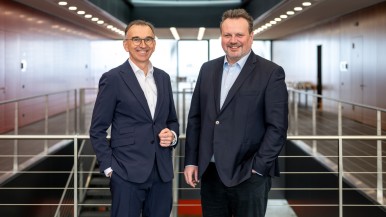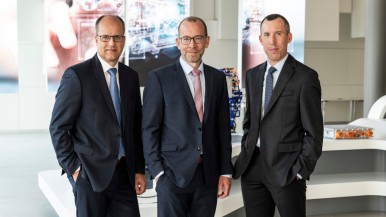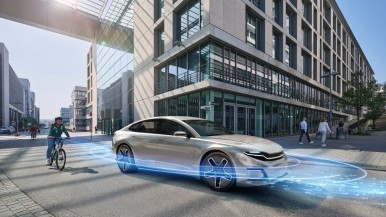The Stuttgart-Feuerbach manufacturing site
- Feuerbach has a firm place in the past and future of mobility. The Stuttgart-Feuerbach site is the largest and oldest Bosch location worldwide. It was set up by Robert Bosch himself in 1909.
- The Feuerbach plant has been moving people and goods for more than 100 years: roughly 2,800 associates work in the Feuerbach plant, and the location as a whole employs roughly 15,000.
- Hardly any other location illustrates the transformation in mobility as well as Feuerbach. The manufacture of magneto parts began there in 1910, and 1927 saw the start of production of diesel injection pumps for trucks. Since then, it has witnessed the start of production of many products, mainly for combustion engines. And now, from July 2023, it will see the volume production of the fuel-cell power module (FCPM) on an area currently almost as large as half a soccer field.
- This volume production of the FCPM is also a joint project involving a number of German locations with a long mobility history: Bamberg is supplying the Feuerbach manufacturing operation with the fuel-cell stack. And important system components such as the electric air compressor and the recirculation blower come from Homburg. The assembly and testing of the complete system is then done in Feuerbach.
- The Feuerbach plant is part of an international manufacturing network. Only as a result of the exchange of knowledge and manufacturing expertise was it possible for production of the fuel-cell power module to start not only in Feuerbach, but also in Chongqing, China, where the requisite components come from the Bosch plant in Wuxi. Similarly, it is planned to manufacture stacks in Anderson, NC.
The fuel-cell power module
- The fuel-cell power module is the most complex system Bosch has ever developed. A fuel-cell power module made in Feuerbach comprises several hundred individual parts, weighs more than 500 kilograms, and has a surface area of roughly 1.5 square meters.
- The module is designed to fit into the space previously occupied by the truck’s combustion engine. This is an advantage for truck makers, and also saves them money, since they can build on the same vehicle platform.
- The fuel cells are the heart of the power module. At first glance, they are not very spectacular. They are only roughly the size of an envelope, and weigh less than 100 grams. To make them capable of propelling a heavy truck, several hundred fuel cells are combined. This combination, known as a stack, provides a total electrical output of more than 100 kilowatts. A fuel-cell power module comprises two such stacks, and thus delivers a total output of more than 200 kilowatts – more than enough to drive a 40-ton truck.
- In the case of the new fuel cell drive system, we can draw on the knowledge gained from decades of research and development work on powertrain components, and also profitably use our manufacturing expertise for the mobility of tomorrow. Over the long term, we want more than half of the fuel cell powertrain by value to be created internally and Bosch's special machine engineering covers more than 50 percent of the production equipment. It was also possible to transfer knowledge relating to coating technology and leak testing. In addition, Bosch researchers have developed solutions that will help prolong the service life of PEM fuel cells to as much as 30,000 operating hours in the future.
- When manufacturing mobile fuel-cell systems, high-speed laser welding is used. We use it to make 1,200 meters of welds in each stack hydrogen-tight.
- Apart from the stack, a mobile fuel-cell system contains many other components, including a hydrogen metering valve and an electric air compressor. Together, they ensure that the fuel cells are supplied with hydrogen and oxygen, so that an electrochemical exchange of the reactant gases hydrogen and oxygen can produce electricity. On the one hand, this electricity is stored in a battery. On the other, it directly drives the vehicle’s electric motor. Unlike in purely battery-electric heavy trucks, where the batteries can weigh up to nine tons, the batteries in a fuel-cell truck weigh only roughly 500 kilograms.
Fuel-cell manufacturing and testing technology
- Following individual manufacturing steps, and before the process is complete, the fuel-cell system is continuously tested for impermeability. The helium used in the leak test is captured, filtered, and reused for subsequent leak tests. In this way, up to 40 percent of the helium used can be reused.
- In addition, the nitrogen that is also used in leak testing is extracted from the ambient air using a nitrogen generator. In this way, packaging and transportation are avoided, and there is no need to compress the gas, which saves energy.
- Each fuel-cell power module is thoroughly tested before delivery. The end-of-line (EOL) test records 450 variables. The various driving modes (acceleration, braking) in the truck are tested with hydrogen and oxygen at a test bench under real conditions. The manufacturing and testing technology used here comes from Bosch Manufacturing Solutions, the company’s special-purpose machinery unit.
- The testing process is efficient in design, and is being further refined. The electricity produced during the process is fed into the Feuerbach location’s power supply.
The fuel cell-electric truck
- If the fuel tanks are big enough, a truck can drive the roughly 800 kilometers from Hamburg to Munich without refueling.
- Refueling takes roughly as long as it takes to drink a cup of coffee: in between 10 and 20 minutes, the truck is full. One kilogram of hydrogen contains as much energy as 3.3 liters of diesel.
- To be able to refuel vehicles with hydrogen quickly and simply, the gas has to be compressed to as much as 900 bar. For the energy-efficient operation of hydrogen compressors in filling stations, Bosch Rexroth has developed a low-maintenance, scalable systems solution.
- Mobile fuel cells run on gaseous hydrogen. Inside the cells, this hydrogen reacts with oxygen from the ambient air. The result is electricity to drive the electric motor and “exhaust” in the form of pure steam.
- At the end of 2022, some 500 vehicles featuring Bosch fuel-cell systems were already on the roads. With the planned start of production in the U.S. and China, their number will grow further. Bosch is confident that, by 2030, one in five new trucks weighing six tons or more will feature a fuel-cell powertrain – provided international efforts to mitigate global warming continue to gain pace.
